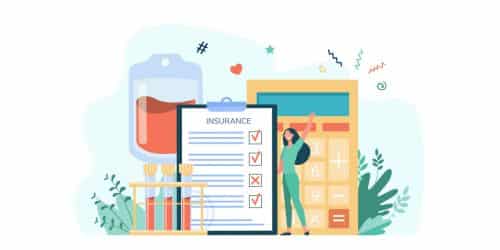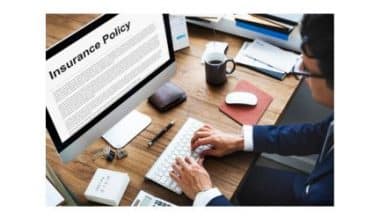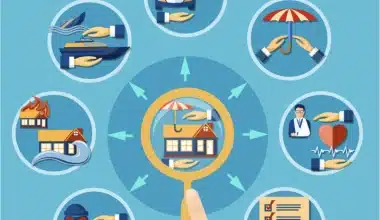When you sell a product, you run the risk of someone getting hurt or having their property damaged. If this happens, you may need product liability insurance, which is a sort of business insurance that may help pay for compensation claims. Even if you didn’t make the goods, you could be held responsible in some cases. Furthermore, this article will tell you what product liability insurance is, the coverage, the cost, aviation products liability insurance, and public products liability insurance.
Products Liability Insurance
Product liability insurance is more than just a guarantee or warranty on a product. It shields enterprises from the consequences of a product causing harm or other damage to third parties.
The incorrect manufacture, promotion, or use of a product can cause harm to people. Even if a product is used inappropriately, your company may be held liable for any damage that ensues.
It is your company’s responsibility to make things right. Product liability insurance can assist in protecting your company in the case of a lawsuit. There were 58,496 personal injury/product liability cases in 2014, a 20% increase over 2013. According to one law firm, the average jury payout in product liability litigation in 2012 was $3,439,035, with a median payment of $1,503,339.20. With the rise in claims and the high expense of lawsuits, product liability insurance is becoming increasingly vital for small businesses.
Why Is Product Liability Insurance for Small Businesses Important?
If your company sells products to clients, a flaw could result in injury or harm to someone else’s property. Assume a customer buys a power tool that your business produces. A flaw in the tool causes the consumer to be injured, and they sue your company. Product liability insurance is part of a larger liability insurance package that can aid with things like:
- The customer’s medical expenses for treatment of their injuries
- Legal expenditures and costs associated with defending your company
- Settlements or judgments obtained against your company
You would have to pay these charges out of pocket if you didn’t have this coverage. Not every company has the financial resources to address product liability litigation.
Read Also: BEST & CHEAP CAR INSURANCE FOR SENIORS 2023
Products Liability Insurance Coverage
Product liability insurance can assist in covering your court costs if a product you make, sell, or distribute causes someone harm or damages their property. In particular, product liability insurance can provide coverage for the following:
#1. Injury Caused by a Product
If someone gets hurt because of something you made or sold, your product liability insurance will provide coverage in paying for their lawyer. It would also cover the court’s decision or settlement.
#2. Property Damage Caused by a Product
If something you produce or sell causes damage to a customer’s property, product liability insurance will provide coverage. A product flaw or a mistake in the instructions that led to improper use of the product could have resulted in the damage.
#3. Illness Caused by a Product
This insurance protects you from getting sick from using goods your business makes or sells. That includes anything from old food that makes a customer sick to beauty products that make someone allergic.
Wrongful Death Caused by a Product
If your product causes someone to die, your product liability insurance will pay for cases, funeral costs, and other costs that come with it.
What Product Liability Insurance Does Not Cover
Product liability coverage excludes:
- Tech products. Product liability pertains only to physical damage, not digital damage. Any damage produced by technical items needs the purchase of errors and omissions insurance (which covers your client’s damages as a result of your errors) or a professional liability insurance policy.
- Employee injuries. Workers’ compensation insurance is responsible for covering employee injuries and lost wages.
- Customer injuries. Customers who are injured on your business premises are covered by general liability insurance in the event of something like a slip and fall.
- Product recalls. If a consumer harm necessitates a product recall, you will need product recall insurance.
- Commercial auto accidents. Commercial auto insurance is able to cover accidents involving commercial vehicles.
- Damage to your property. Commercial property insurance safeguards your property against damage, whereas professional liability insurance covers damage to other people’s property resulting from your goods.
Who Needs Product Liability Insurance?
If you have a supply chain or sell products to consumers, product liability insurance may be worth considering. Many industries, whether tiny firms or huge corporations, can benefit from this coverage, including:
- Manufacturers,
- retailers,
- wholesalers, and distributors
An issue at any level of production might result in flaws, putting your company at risk of a product liability claim. That is why it is critical to secure your company with the proper insurance.
Read Also: BARBER INSURANCE: Coverage, Types & Cost
Products Liability Insurance Cost
The average monthly cost for small companies is $42 for general liability insurance, which usually includes product liability insurance. The likelihood of customer litigation involving your products or rendered services determines the cost.
What Is the Average Cost of Product Liability Insurance?
Your general liability insurance policy will most likely contain product liability insurance. It may also be referred to as:
- Product liability insurance is available for retailers, manufacturers, and distributors.
- Products-completed construction and installation business operations coverage
On average, general liability insurance costs small businesses $42 per month or approximately $500 annually. These estimates are based on the median cost of policies purchased from prominent insurance carriers by Insureon consumers. Because it excludes outliers with high and low rate
Tips for Saving on Product Liability Insurance
Companies can lower their product insurance premiums by taking a number of measures. Good risk management stands out as the most crucial and obvious.
The lower your claims history, the lower your premiums will be. Producers, retailers, and distributors of goods must keep a close eye on the quality of their wares at all times. To ensure that products are defect-free, they must create testing processes and conduct rigorous quality control.
The caliber of your employees’ work typically determines the caliber of your products, so training them is obviously essential. Make sure that the firms you contract with to produce, distribute, or sell your goods are reliable and that they have adequate insurance coverage.
Aviation Products Liability Insurance
This type of insurance protects companies that make aviation products, maintenance companies (also known as Maintenance Repair Overhaul or MRO), FAA Part 145 Repair Stations, airport owners, and Fixed Based Operators (FBO) from claims that come up because they make, sell, or distribute products; fix or modify aircraft; or provide services related to aircraft products. Specifically, aircraft products covered include:
- Purchase and sale of new and old aircraft
- Parts and equipment for aircraft
- Oil and fuel sales
- Completed operations are described as aircraft repairs and servicing, including the installation of parts and accessories.
Aviation products liability insurance shields the insured from financial liability for injuries to members of the public as a result of improperly executed operations or defective products. The coverage is intended to pay for incidents caused by errors in the manufacture or preparation of products or the performance of service work. Aviation products liability insurance can be written as a separate policy or as part of an Aviation Commercial General Liability Insurance policy.
What’s Covered by Products Liability Insurance?
Products liability coverage includes three liability limits:
- per person
- Per accident
- Policy aggregate limit
Catastrophe losses have been a prominent issue in the formulation of product liability. Consider the Boeing 737 Max crashes in Ethiopia and Indonesia, where the MCAS system failed. Not only are there manufacturing flaws, but the whole fleet of Boeing 737 Max planes has been grounded.
A Commercial General Liability coverage will include the following provisions:
- Premises Liability
- Bodily Injuries and Property Damage
- Supplementary Payments and Defense Settlement Costs
- Products and Operations Completed
- Personal Injury and Advertising
- Grounding Liability
- Spare Parts Liability
- Legal Liability to a Third Party
Types of Aviation Businesses That Require This Coverage
The products liability coverage applies to persons who create or sell aircraft items and components to others. The completed operations area largely applies to organizations that do servicing, installation, and repair work, such as fixed-based activities. Because of the catastrophe risk, most markets only sell this coverage after a thorough examination of all the insured’s operations.
Just a few markets, most notably Global Aerospace, USAIG, AIG, and Lloyd’s of London issue a sizable amount of product insurance for manufacturers of aircraft and engines as well as thousands of component parts.
Already Have Products Liability Insurance?
You probably already have products liability insurance if you work in the aerospace business as a maintenance shop, aircraft manufacturer, parts manufacturer, FBO, fuel provider, paint shop, or avionics company.
Questions to ask your current aviation insurance broker:
- Which aviation insurance companies now provide product liability insurance to the aviation industry?
- How do insurance companies assess a company’s product liability exposure?
- Should I provide new insurance companies with loss runs so they can quote?
- What liability limitations would be sufficient to cover my business operations?
- Is it possible for the underwriters to come to our offices and observe our operations?
- Are there any new firms that provide product liability coverage?
Public Products Liability Insurance
Products and public liability protect your company if you or your workers are held legally liable for accidental injury to clients, consumers, or the general public or property damage as a result of your company’s actions or products.
Public Liability vs Products Liability Insurance?
There are differences between public liability insurance and products liability insurance, even though products liability and public liability can be bought together or as separate premiums. These days, product risk isn’t usually sold by itself.
There are some situations where both public liability insurance and product liability insurance will pay claims from third parties for injuries or property damage. However, the way each insurance policy handles these situations is different.
For example, public liability insurance covers problems that happen when you provide your services, while product liability insurance covers problems that happen when you make, sell, or supply materials.
You could be held responsible for a public liability claim if you hurt someone or damaged their property while providing your services. For example, if you leave a wire on the floor by accident and someone trips and falls, that person could file a lawsuit against you.
A product liability claim could be made against you if the product you sold hurt someone else or damaged their property, whether because of a problem with the design or manufacturing of the product or because you didn’t give enough warnings. The third party could then sue you for products liability.
What Is the Difference Between Product Liability and General Liability Insurance?
Your business needs product insurance if it sells, produces, or distributes products that could cause injury or damage to customers. However, general liability insurance covers claims that arise outside of normal business operations.
What Is a Product Liability Product?
For the purposes of a product liability claim, virtually any item sold to the general public qualifies. Items like medical equipment and drugs are included in this category as well as those used in the home. Toys for children are a regular target of product liability lawsuits. Toolkit for maintaining lawns.
Do I Have To Have Product Liability Insurance?
Even while product insurance is not required by law, it is still strongly recommended for any business dealing with the public. If your goods cause harm to a customer or damage to their property, they may sue you for compensation.
What Are Products Liability Claims?
According to the law, retailers, and manufacturers must compensate customers, users, and even bystanders who suffer harm as a result of faulty products they purchase. Product liability law is the body of law that governs tort claims arising out of product use.
What Are the Three Major Areas of Products Liability?
You may have a product liability claim against one or more of the companies involved in getting the product to you. One of the three types of product defects—design flaw, manufacturing flaw, or marketing flaw—is likely the basis for your product liability claim.






